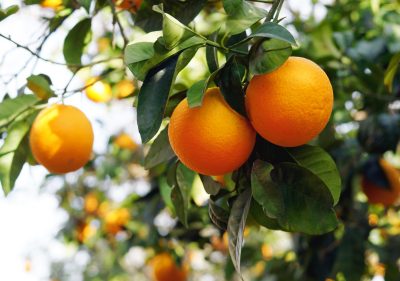
California residents are being urged to avoid transporting citrus fruit during the upcoming summer travel season due to the highest-ever threat of a deadly citrus tree disease called Huanglongbing (HLB).
HLB is spread by a tiny insect, the Asian citrus psyllid, as it feeds on citrus tree leaves. The small pest can have devastating consequences to California’s citrus trees – both backyard and commercial – if it is unknowingly transported on citrus tree leaves and stems. While HLB is not harmful to humans or animals, there is no cure for the disease and infected trees will die.
According to AAA, over 68 million families are expected to travel this summer. All citrus tree owners among those travelers should obey quarantine restrictions throughout the state that limit the transport of citrus across state and international lines, and between areas where the psyllid and disease have been found.
Currently, more than 1,000 square miles within Southern California in numerous communities of Los Angeles, Orange, San Bernardino and Riverside counties are in an HLB quarantine area. At this time in 2018, 683 square miles were in quarantine, meaning the disease is spreading to new areas and the overall HLB quarantine area has increased by 47%.
“The threat of HLB in California serves as a reminder that all residents should not transport citrus in and out of quarantine areas, bordering counties, state lines or international borders,” said Victoria Hornbaker, interim director of the Citrus Pest & Disease Prevention Program at the California Department of Food and Agriculture (CDFA). “We must work together to limit the spread of the pest and disease to ensure California citrus continues to grow in our backyards and commercial orchards.”
Tree owners may choose to share fruit with friends and family within their quarantine area, but all leaves must be removed and fruit washed thoroughly before moving it from the property. Residents should be sure to dry out citrus clippings or double bag them before disposal. This prevents the psyllids or leaves infected with Huanglongbing from spreading to new areas.
All California residents are critical to protecting the state’s citrus trees. Tips for citrus tree owners include:
- Proactively inspect citrus trees for the Asian citrus psyllid and HLB monthly, and whenever watering, spraying, pruning or tending trees.
- Look for the Asian citrus psyllid. Adults are brown, about one-eighth of an inch long, and feed with their body at a 45-degree angle on citrus leaves.
- Symptoms of HLB include blotchy and yellowing leaves, premature and excessive fruit drop, lopsided fruit, and bitter, inedible fruit.
- Call the state’s pest hotline at 800-491-1899 if the pest or disease is spotted.
- Cooperate with agriculture officials who may ask to inspect or treat citrus trees.
- As part of tree maintenance, visit a local nursery or garden center to get advice on products that can help protect citrus trees.
- When pruning citrus trees, be sure to dry out citrus clippings or double bag them before disposal.
- Refrain from moving citrus plants, foliage or fruit as doing this may unknowingly spread the pest.
More information and photos of the Asian citrus psyllid and HLB symptoms are available at the CDFA web site or at CaliforniaCitrusThreat.org.


